A cable car over the sea, which neither ours nor the Germans could destroy
In the summer of 1943, the German 17th Army found itself in the position of the well-known wolf on Taman, who decided to climb into the sheepfold. But this wolf was still quite capable of snarling ferociously, as long as there was sufficient material supply for the troops.
I have passed through the Kerch Strait so many times that it is impossible to calculate, and even during military service, our missile boats began their independent life from the outfitting base on the territory of the Zaliv shipyard. There are very narrow places in the strait, but it has its own burrows – there are strong winds, fogs, in winter ice fields walk from north to south, then vice versa. For smaller vessels, this creates enough problems. And the war will not wait – supply the troops with ammunition, food, weapons, fuel and you never know what else.
Is there a way to transport all this regardless of the state of the water surface of the strait, weather, time of day and year? The Germans found such a way – a cable car. On land, German troops used cable cars wherever there was at least a temporary need. They were used where it was impossible or impractical to deliver military cargo with the help of pack animals or porters. Large cable cars were laid by German troops not only in the Crimea, but also in the Crimea, but also in the Crimea. but also in the Caucasus (in the area of the Marukh pass), in the Murmansk region. The caption under this photo in the English-language source reads: German cable car in the Kuban.
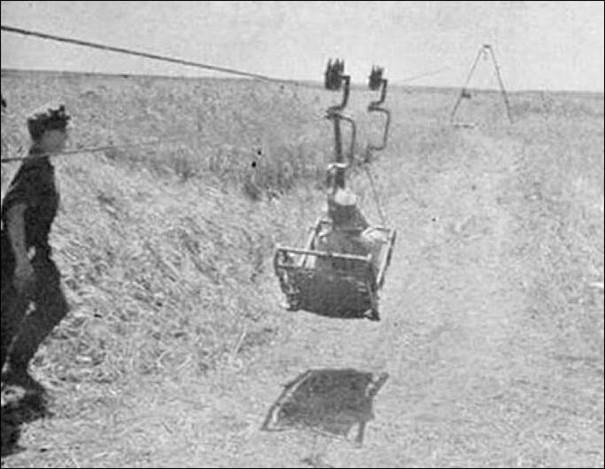
And here is the caption in German under the following picture:
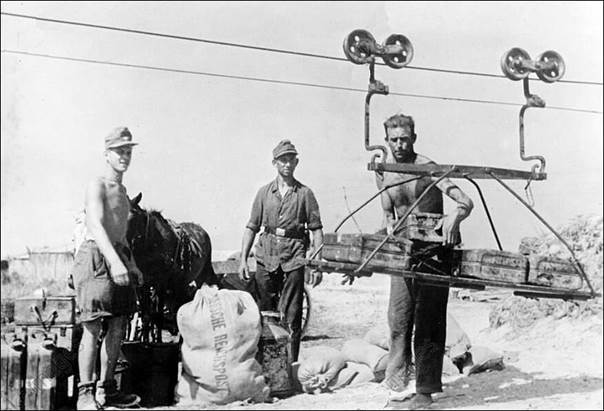
“Am Kubanbrückenkopf. Eine Seilbahn bringt neben der Verpflegung u.a. auch Sandsäcke vom Strand in die Lagunen.” On the Kuban bridgehead. In addition to meals, etc., the cable car also delivers sandbags from the beach to the lagoons.” In this case, the lagoons are probably Kuban floodplains, where there are very few solid paths. Here’s an interesting shot from those places:
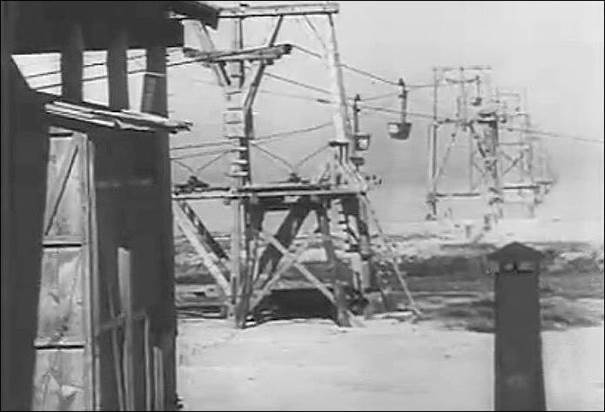
And here he is on the cover of the magazine of October 6, 1943:
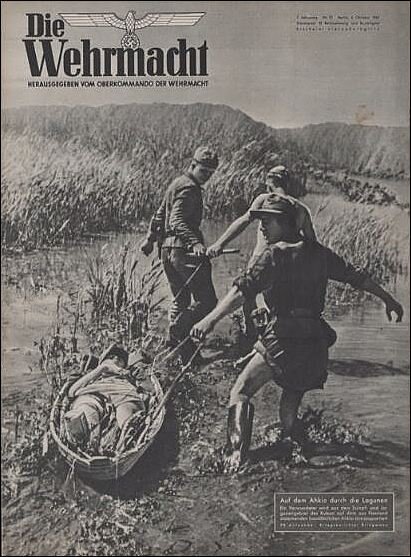
Framed text: A wounded person is evacuated from swamps and floodplains in the Kuban with the help of a Finnish stretcher in the form of an Ahkio boat.
But that’s not it. In fact, the cable car through the Kerch Strait looked like this:

And this is Albert Speer himself, Hitler’s personal architect, Reich Minister of Armaments and War Production, overseeing its launch:
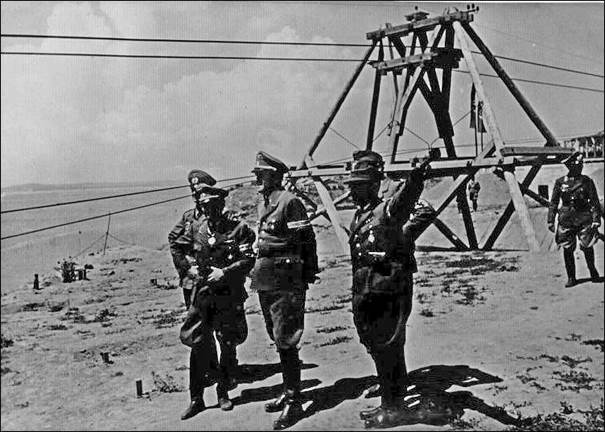
He then served his 20 years after Nuremberg from bell to bell, but certainly not for architecture and the construction of cable cars. The Germans put it into operation on June 14, 1943, spending only 23 days on the construction, during which time they installed 25 supports.
According to various sources, from 300 to 1000 tons of cargo were transported on it per day, but mostly about 500-800. For comparison, in November 1941, an average of a little more than 100 tons of cargo per day was delivered along the Leningrad “Road of Life”, at the beginning of December, as the ice intensified, about 300 tons, and by the end of the month already about 1000 tons.
On October 9, Taman was liberated from the Germans, and finally they destroyed the suspension road. And here the question arises – why didn’t our aviation, for example, do it earlier? After all, in the spring, as a result of the well-known air battle over the Kuban, our air superiority was won. So why wasn’t this important supply line for the German troops destroyed?
Interestingly, this cable car was restored by our engineering units. Equipment from one of the industrial cable cars operating at that time in Georgia was used to restore the road.
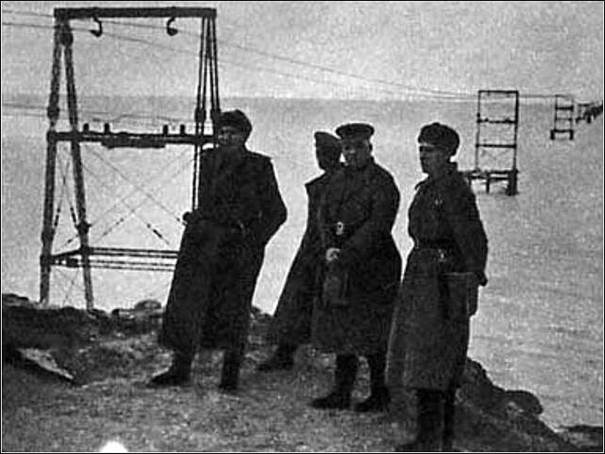
In February 1944, the cable car crossing over the Kerch Strait began to operate again. Its length was 5100 meters, 150 freight cars worked on it. True, the daily productivity of the Soviet railway was only 300 tons, but still for several weeks the cable car was the only means of delivering goods to the Crimean coast. Apparently, this refers to the time of ice drift, when northern winds drive ice fields into the strait from the Sea of Azov.
And what is characteristic, the German aviation, which still had enough in the Crimea, could not interfere with its work either. The German 17th Army, which managed to escape from Taman, found its end in the Crimea. It was reformed in Poland, but it never needed cable cars again.
